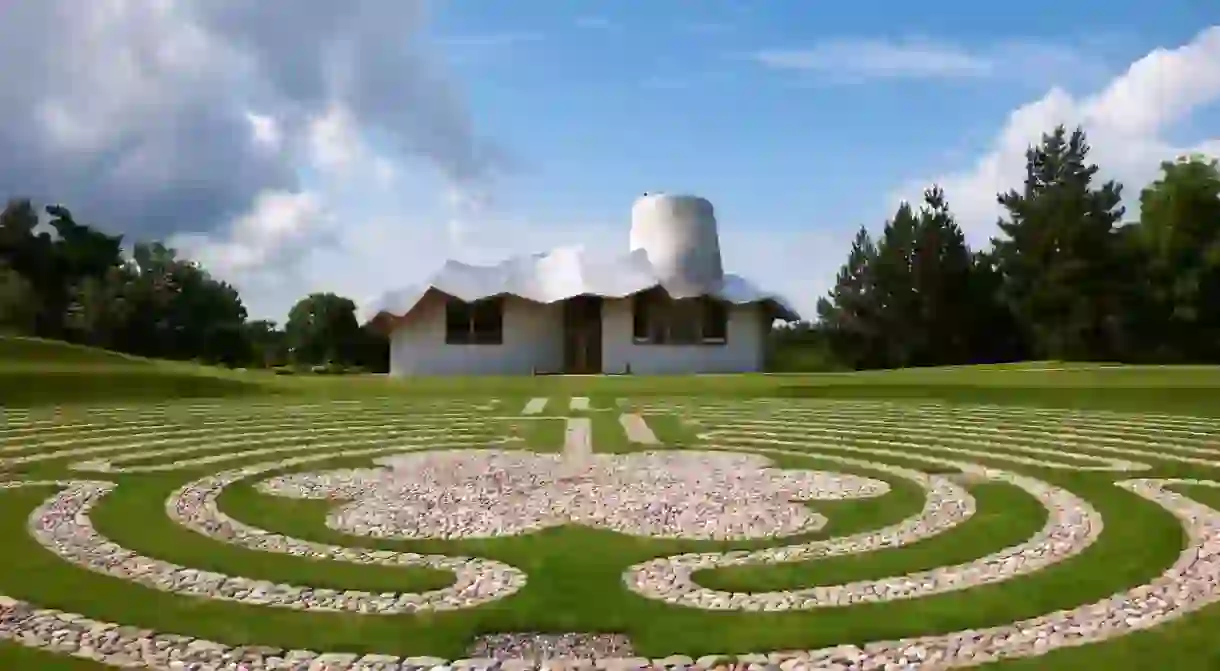Maggie's Centres and the Power Of 'Good' Design

Upon discovering that her cancer was terminal, Maggie Keswick Jencks endured the torture of hospital waiting rooms and fluorescent-lit corridors engulfed by sterility and isolation. For patients battling harsh treatments and the devastation of disease, a bleak hospital environment can chip away at the essential will to fight.
What’s required is the physical, emotional, and mental strength to forge ahead, armed with the determination to one day reclaim their disrupted lives. By inverting the misery of dehumanized spaces, Maggie conceived of a beautiful solution: a mission of hope through architecture.
Architecture is not confined to the physical — design guides a lived experience that delves into the realms of anthropology, psychology, and the spiritual.
Consider the lived experience of a hospital patient like Maggie. Visiting hours are limited, so you accept isolation. Your senses atrophy from the absence of music and art. There are few communal spaces in which to socialize, and fewer contemplative spaces in which to meditate. The corridors act as narrow spatial entrapments. You’re essentially reduced to the illness that imprisons you.

Maggie understood that the healing process is not confined to the physical either. She dreamt of fluid, organic spaces conducive to healing on every level; surrounded by friends and family for support in communal areas flooded with natural light, complemented by personal spaces reserved for time to reflect alone.
While hospitals are necessary medical institutions, they serve a one-dimensional purpose. Healing of this magnitude requires so much more than Western medicine offers.

The first Maggie’s Centre stands at Edinburgh’s Western General Hospital, where Maggie tragically succumbed to her illness in 1995. But her vision to create a humanizing space specifically designed for cancer patients to receive medical treatment alongside alternative forms of care (emotional guidance, dietary advice, relaxation and beauty therapy) was realized in its entirety.
Designed by Edinburgh-based architect Richard Murphy, the original Maggie’s Centre is a convergence of traditional Scottish masonry with clean, modern elements. An open-plan interior encourages natural movement, circulation, and connectivity, while small, private nooks provide safe, quiet escapes when patients require solitude.
From a design perspective, Maggie’s Centres are built to foster a kind of “architectural placebo effect,” as Maggie’s husband, the iconic landscape designer and architectural critic and theorist, Charles Jencks, thoughtfully described.
While nothing other than aggressive medical treatment can directly target the disease itself, ‘good’ design can actually serve as an alternative form of therapy — and Maggie’s vision to improve the cancer patient’s experience through careful spatial manipulation has taken off to say the least.
Today, there are 19 established centres across England, Wales, and Scotland, one in Hong Kong, another in Tokyo, and nine in development — each expertly designed by the world’s foremost architects.

Designed in the aesthetic of its architect, all the buildings adhere to Maggie’s core principles: the presence of an open kitchenette where patients can gather at will for a cup of tea, to share laughs, tears, and wisdom; well-lit, spacious sitting rooms; access to a garden or some form of greenery; and stunning natural vistas that awe and inspire.
The late Dame Zaha Hadid designed Maggie’s Centre in Fife as a retreat with a relaxing domestic atmosphere worlds away from the reality of illness.
Situated near Victoria Hospital in Kirkaldy, Maggie’s Centre Fife was created as a “protected” environment, fostering a naturally fluid transition between the organic and the designed. Hadid’s typically formidable exterior serves as a reminder of each patient’s unfathomable strength, while the interior space is both radiant and calm.

In a similar theoretical vein (executed with an entirely unique aesthetic), Frank Gehry explained that Maggie’s Centre in Dundee aims to “contribute to a sense of rejuvenated vigour for moving forward and living life.”
Gehry’s design incorporates natural materials such as wood with modernist accents beneath his signature rooftop silhouette. The central structure is akin to a traditional Scottish cairn — an ancient cylindrical stone structure that served as a landmark, fortification, and spiritual site.
Gehry’s Dundee Centre resonates with an electric energy, while a stunning garden and labyrinth designed by Arabella Lennox-Boyd is a peaceful allegory for life’s complicated and puzzling journey. Lennox-Boyd noted that her labyrinth is a direct nod to Maggie, who was a landscape designer in her own right, and notes that this special project combines “excellence in design with the best of the human spirit.”

From the designs of Rem Koolhaas to Snøhetta and Kisho Kurokawa, all uniquely arresting Maggie’s Centres transcend their material walls. Maggie’s is paradigmatic of the ways in which architecture and design reflect, support, and guide lived experiences on a cross-cultural level.
After completing his Dundee Centre, Frank Gehry designed the Centre in Hong Kong. He explained that his vision for this particular space was to remain aware and “respectful of Chinese architecture and motifs,” complementing regional concepts of happiness and wellbeing. Minding local values of collectivism and the natural environment, Gehry’s Hong Kong Centre serves as a microcosm, encouraging a natural flow between interior and exterior space.
Here, rooms offer visual and physical access to outdoor gardens, each overlooking a pond inspired by the Classical Gardens in Suzhouf. With a large, open-plan indoor space, patients are encouraged to find solace in community and social exchange.

Each year in the United Kingdom alone, over 300,000 people are diagnosed with cancer. The disease targets each victim directly, but it also hijacks the lives of their loved ones. In 2015, approximately 200,000 cancer patients visited a Maggie’s Centre for treatment, support, and guidance.
Not all Maggie’s patients are survivors, but Maggie’s vision to create safe, healing spaces that foster hope and improve otherwise insufferable living conditions exemplifies the critical importance of architecture and design — an imperative relationship that’s easy to take for granted.
To support Maggie’s cause, please click here.













